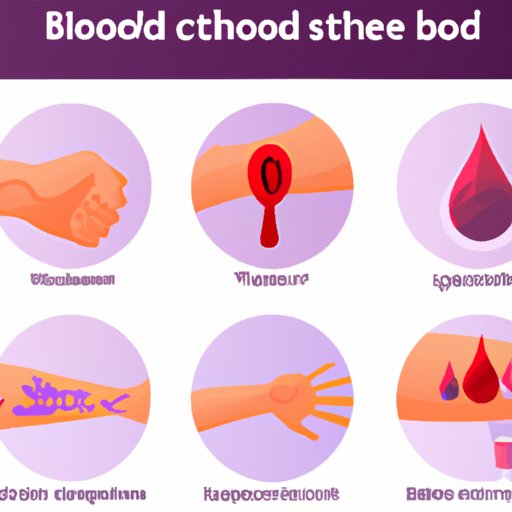
Introduction
Have you ever heard of a blood clot? Blood clotting is a natural process that happens when you have an injury. It is necessary to prevent excessive bleeding. However, sometimes blood clots can form in your veins or arteries, leading to serious health complications such as heart attack and stroke. In this article, we will go over everything you need to know to recognize the symptoms of a blood clot and understand the risk factors associated with its development, diagnosis procedures, and treatment options. It’s important to be familiar with this topic to protect your health.
Symptoms of a Blood Clot
There are a few symptoms that you can observe if you have a blood clot, the severity of which depends on the location. Common symptoms include redness, swelling, pain, and warmth in the affected area. If the blood clot is in your leg, you might feel cramping or soreness, whereas, in your lungs, you may feel sharp chest pain or shortness of breath. If you experience any of these symptoms, reach out to your health care provider. Serious symptoms of blood clots may signal an emergency, and you should immediately call for medical help.
Risk Factors for a Blood Clot
Although blood clots can happen to anyone, some people have a higher risk of developing them due to underlying conditions. Some of the common risk factors include smoking, obesity, being inactive, and having a history of blood clots in the family. Additionally, having underlying medical conditions such as cancer, heart disease, and a clotting disorder may also increase your risk of blood clots. Understanding and recognizing these risk factors can help you take measures to reduce your chances of developing them.
Diagnosing a Blood Clot
If you have symptoms of blood clots or fall under any risk category, your provider may suggest performing a few diagnostic tests to confirm your diagnosis. Ultrasound is a standard test used by doctors to detect blood clots. It is low-cost, non-invasive, and painless and it can help identify the presence of clots in your legs, arms, or other blood vessels. Blood tests and CT scans are other tests used to diagnose blood clots along with their severity and location.
Treatments for Blood Clots
Before starting your treatment plan, the medical professionals will customize an approach to your specific needs based on factors such as the location and severity of the clot, your age, medical history, and other factors. Blood thinners are a common treatment for blood clots, while some patients may require surgery to provide intervention. Lifestyle changes, such as quitting smoking, losing weight, and more daily active exercise, are a few choices that can lower your chance of developing a blood clot or decrease the possibility of the recurrence of clots.
Prevention Strategies for Blood Clots
Preventative measures and lifestyle changes are some of the most effective ways to lower your risk of developing blood clots, especially if you have an underlying medical issue. In addition to regular physical activity and a healthy diet, compression stockings are a popular tool that helps prevent swelling in the legs, which in turn, reduces the risk of blood clots. Be sure to speak with your healthcare provider if you are demonstrating any risk factors for an added layer of customized preventative methods that can work for you specifically.
When to Seek Medical Attention
If you have a family history of blood clots, it’s vital to be vigilant, and symptoms should be evaluated immediately. If you are experiencing severe or quickly worsening symptoms, such as intense chest pain or shortness of breath, seek emergency medical attention. Prompt action may help prevent fatal consequences, and it’s essential that you don’t delay medical care.
Conclusion
Recognizing the symptoms and risk factors for blood clots is crucial for maintaining a healthy lifestyle. Preventive measures are fundamental, such as regular exercise and healthy nutrition, and avoiding risk factors such as smoking. Understanding when to seek immediate medical attention for a blood clot is also important in preventing complications. By incorporating these lifestyle changes, clinical assistance, and diagnostic measures when needed, you will be looking out for your best interest and prolonging your quality of life.





